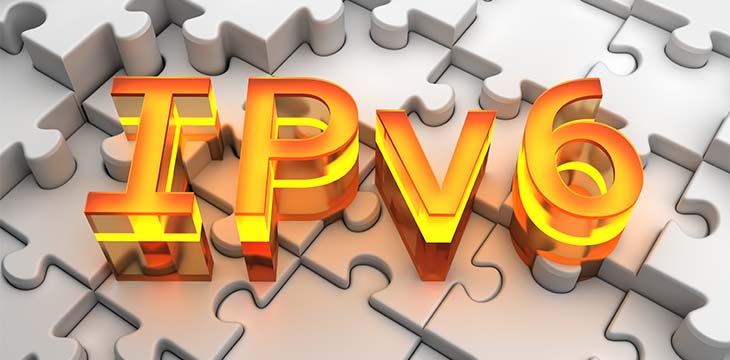|
Getting your Trinity Audio player ready...
|
P2P or end-to-end Bitcoin transactions are coming back. Do you want to be ready? Then IPv6 is the way to go. To help spread the word on IPv6 and why it’s necessary, websites in the Bitcoin world are moving to IPv6 servers. So far, CoinGeek, nChain, and Bitcoin Association have IPv6 addresses, and more in the BSV industry will likely follow if they aren’t already.
- coingeek.com – 2606:4700::6813:ab32
- nchain.com – 2606:4700::6811:9f43
- bitcoinassociation.net – 2606:4700::6811:17eb
Why does Bitcoin need IPv6? Or rather, why does IPv6 need Bitcoin? Bitcoin is, after all, “a peer-to-peer electronic cash system.” Support for direct transactions between IP addresses was written into Bitcoin’s original code, and, although it worked, there were some security vulnerabilities when communicating over IPv4.
IPv4 is the older (but for now, still the majority) Internet Protocol. In recent years more of the global network has started to migrate to IPv6, which has 340 trillion trillion trillion (not a typo) unique addresses, and built-in privacy/security enhancements, like cryptographically generated addresses (CGAs).
With IPv6, Bitcoin can realize its full potential with direct, secure, and fast transactions between hundreds of billions of users and devices worldwide. Bitcoin and IPv6 can create an entirely new kind of digital economy. Micro and nano-payments can be automated between machines and tiny IoT devices. The Internet can finally have its long-awaited payments layer and the means to manage it.
Check if you’re using IPv6, and how to set up
IPv6 addresses look different from IPv4 ones. Instead of four numbers separated by periods, IPv6 usually has eight groups of four hexadecimal characters, separated by colons. If you see a double colon, it’s shorthand for groups with only zeros (eg: 0000:0000 becomes ::). Any leading zeros in a group can be omitted.
You can confirm whether a site is running on IPv6 by installing an extension called “IPvFoo” in Chrome and Chromium-based web browsers. A small widget will display whether you’re looking at the site on IPv4 or the shiny new version 6.
There’s still one issue, though: even if a site has an IPv6 address, you might still be looking at the IPv4 version. There isn’t any difference (to the user) in how the site functions, and you might wonder why you can’t see any sites running on IPv6.
The reason is probably this: you’re still on an IPv4-only network. Here’s where it gets a bit tricky because to change that, you’ll have to configure your home router (or wifi router) settings.
If you don’t know how to do that, it might be best to leave it alone for now or learn. If you do, it’s relatively simple (though it’ll be different for every router). Most modern router configs will have a section to set up IPv6 network access. What you enter into its fields will depend on your ISP. Either you’ll have to chat with your ISP’s support team, or they’ll have a page online to guide you.
Popular brands like Netgear and TP-Link have information pages about router/wifi configuration and how to set them up for IPv6. Here are a few links, and if your brand isn’t there, you can still get a general idea of how it’s done and what’s required:
- TP-Link – https://www.tp-link.com/us/support/faq/1525/
- Netgear – https://kb.netgear.com/24012/How-do-I-set-up-a-fixed-IPv6-Internet-connection-on-my-Nighthawk-router
- Asus – https://www.asus.com/support/FAQ/113990/
- LinkSys – https://www.linksys.com/us/support-article?articleNum=143599
It’s also possible your ISP or mobile provider doesn’t offer IPv6 access yet, though it’s becoming more common for them to have it as an option. Sadly, if not, it’s a sign that your ISP isn’t future-oriented. Some ISPs actually require IPv6 configuration at setup, so you may already have it.
Bitcoin and IPv6: improving the Internet
Dragging the entire Internet, along with all its users and services, into the IPv6 world has been a slow process. After all, IPv6 has been a thing since before the world wide web, and even tutorials from over a decade ago tell us IPv4 probably still has a few more years left. That’s mainly due to the work network administrators need to do to reconfigure everything, as well as the need to replace outdated hardware.
Bitcoin P2P transactions should still be able to use IPv4, so legacy networks don’t get left behind—as long as you have a static IPv4 address without a NAT or CGN router handling your traffic. But that’s not everyone. For ordinary users, unique IPv4 addresses are pretty rare these days. The transactions will also need to rely on IPv4’s security add-ons like DNSSEC and TLS/SSL certificates to generate addresses. Though this works, IPv6’s built-in secure key generation is far better.
Direct transactions between IP addresses are another example of how Bitcoin was years ahead of its time, even in 2008. Though migrating to a better network has been a slow process, it’s speeding up fast. It’s good to have a little knowledge about how this works and why it’s better, so take those steps to migrate yourself to IPv6 as soon as you can.
Watch: Dr. Craig Wright’s keynote speech at the BSV Global Blockchain Convention: A Better Internet with IPv6 and BSV Blockchain
https://www.youtube.com/watch?v=EdhD4sRrHPs

 12-27-2025
12-27-2025 




